Scientists Discover Dogs Dream About Playing With Their Owners
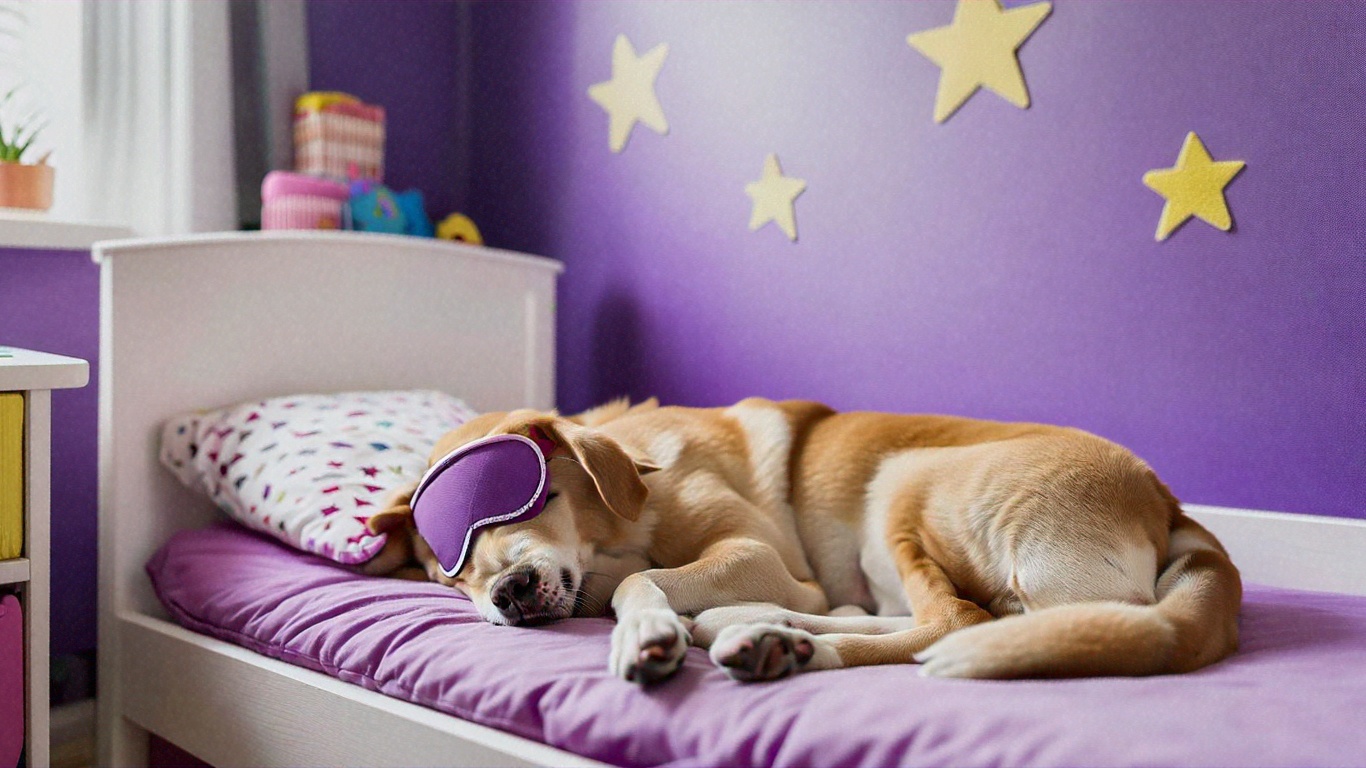
Your dog is fast asleep. Suddenly, their paws begin to twitch, their nose wiggles, and a muffled bark slips into the quiet of the night. For a moment, it looks as if they are racing across an invisible field, chasing something only they can see. You smile and wonder what they are dreaming about.
Science has long told us that humans dream to process our days, replay memories, and untangle emotions. Here is something that might surprise you: our dogs do the very same thing. Researchers have found that animals, much like us, enter REM sleep, a stage where vivid dreams come alive. For dogs, the stars of those dreams are often the ones who matter most, their humans.
Imagine it: while you are sleeping, your dog may be dreaming of the ball you threw at the park, the walk you took down a favorite street, or the way you reached down to scratch behind their ears. Their dream world is a mirror of the life you have built together.
The Hidden Architecture of Canine Sleep
To understand what dogs dream about, it helps to peek into the structure of their sleep. Like us, their nights are not one long stretch of rest but a cycle of different stages.
When a dog first drifts off, their breathing steadies and their body relaxes. This is slow-wave sleep (SWS), the heavy, restorative stage where the body repairs itself while the mind stays relatively quiet. About twenty minutes later, the curtain rises on a more mysterious act: REM sleep, rapid eye movement sleep. This is where most dreaming happens. Behind closed lids, their eyes dart, brain activity spikes, and their muscles sometimes reveal the story playing out in their minds, a twitching paw, a flicking ear, a softly wagging tail.
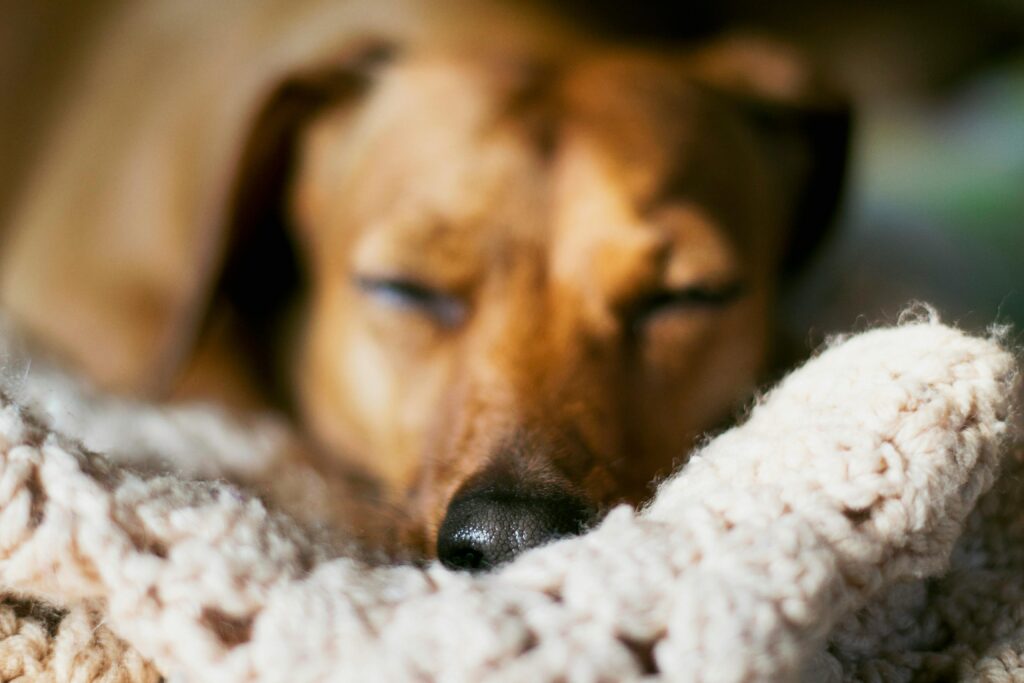
Science shows how real these dreams are. In a well-known experiment, MIT neuroscientist Matthew Wilson recorded rats running a maze while awake. Later, during REM sleep, the rats’ brains fired in the same patterns, as if they were running the maze again in their dreams. The takeaway is simple and striking: animals do not just sleep, they re-live. Their dreams are stitched from the fabric of waking life.
Dogs follow the same rhythm. Not all dogs dream alike, though. Smaller breeds (think Chihuahuas or toy poodles) dream more often, sometimes every ten minutes, but their dreams are shorter. Larger dogs, like Labradors or Great Danes, may dream less frequently, yet their dream sequences last much longer. Puppies, flooded with new experiences, are often the most frequent dreamers, their young brains busy filing away each lesson, game, and moment of affection.
What Dreams Reveal About a Dog’s Daily Life

Dreams rarely appear from nowhere. The continuity hypothesis of dreaming says dreams are built from waking experiences. Just as a child might dream about a favorite game or an adult might replay a stressful meeting, dogs weave their daytime adventures into the fabric of their dreams.
If your dog spent the afternoon chasing a ball, do not be surprised if their paws start twitching later as though sprinting across a field. A pup learning a new command may practice it again in sleep, letting out a muffled bark or whine as if rehearsing. A day filled with cuddles can become dreams of warmth and closeness, while a stressful vet visit may spill into a restless night.
Experts back this up. Psychologist and dog behavior researcher Dr. Stanley Coren notes that dogs probably dream about their daily experiences, much like humans do. Harvard psychologist Dr. Deirdre Barrett suggests that because dogs are deeply bonded to their humans, they are likely dreaming of familiar faces, scents, and shared activities. In her words, dogs may dream “of your face, your smell, and of pleasing or annoying you.”
Breed and age shape dream patterns as well. Smaller dogs tend to dream more frequently in shorter bursts, while larger dogs dream less often with longer storylines. Puppies, awash in new memories, spend a great deal of time in this dream world, their sleep a busy workshop of learning and replay.
The Emotional Dimension of Dog Dreams
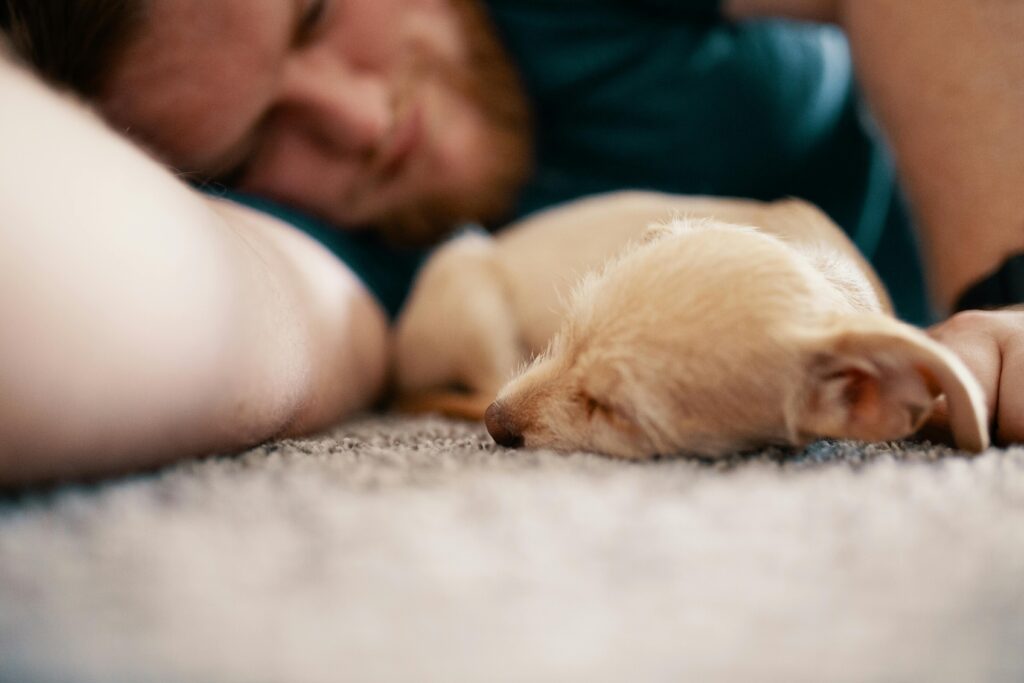
Dogs have the neurological machinery for complex emotions. The amygdala, a brain region central to emotional processing, is active in dogs as it is in humans. This means their dreams are not only about events but also about how those events felt. A joyful game of fetch can return in sleep with the same excitement, trust, and delight.
Dogs can also carry anxieties into their dreams. A stressful vet visit, the memory of a thunderstorm, or feelings of separation may surface as nightmares. Owners notice whimpering, irregular breathing, growling, or twitching with visible distress. Although it is tempting to wake a dog, veterinarians advise against shaking or startling them mid-dream. A sudden interruption can confuse or frighten them and may provoke a defensive reaction. Let the dream run its course or gently call their name to ease them awake.
These emotional dreams underline the depth of the bond dogs share with their humans. When they dream of us, it is rarely neutral; it is infused with the love of a morning walk, the thrill of a game, or the sadness of a day apart. Their inner lives reflect not only what they do but how deeply they feel.
The Deeper Human-Dog Bond
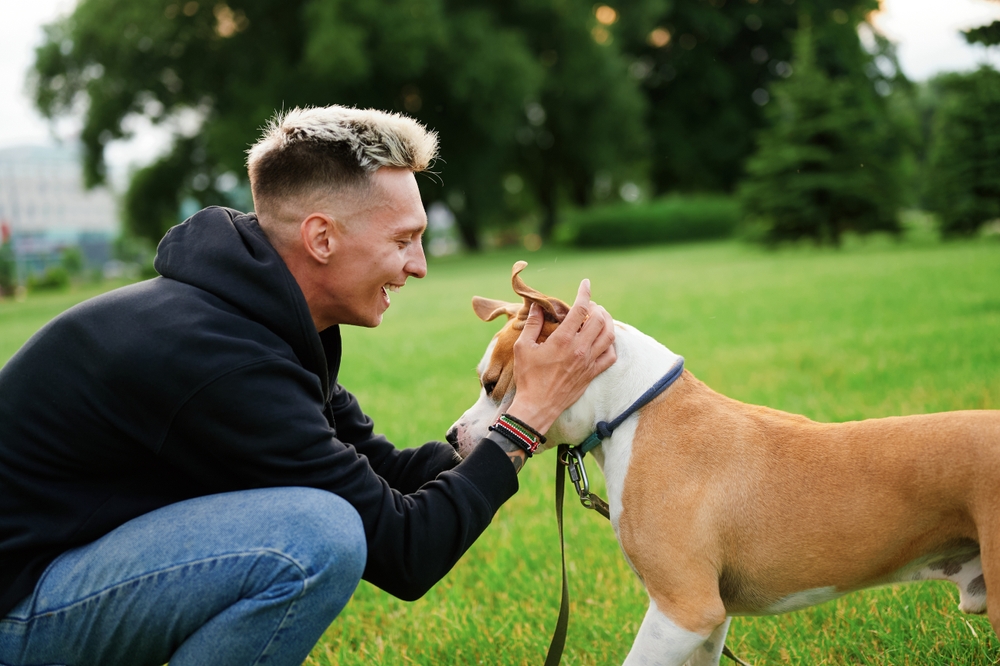
Dr. Deirdre Barrett explains that because dogs are closely bonded to their owners, their dreams likely revolve around familiar faces, scents, and routines. She notes that dogs may dream “of your face, your smell, and of pleasing or annoying you.” Those nighttime tail wags and muffled barks may not be about chasing a ball; they may be about chasing you.
This fits the continuity hypothesis: dreams reflect waking life. Since so much of a dog’s day is spent by our side, it is natural that we appear in their dreamscapes. A walk in the park, the sound of your voice, or the warmth of a hug can echo into sleep as vividly as any squirrel chase.
Beyond the science lies something more personal, a reminder of how deeply connected dogs are to us. A dog’s world is wonderfully focused. We are their family, confidant, and anchor. Knowing we likely appear in their dreams shows that our presence does not end when the day does. It lingers, shaping even the hidden landscapes of their sleep.
Shaping Your Dog’s Dream World
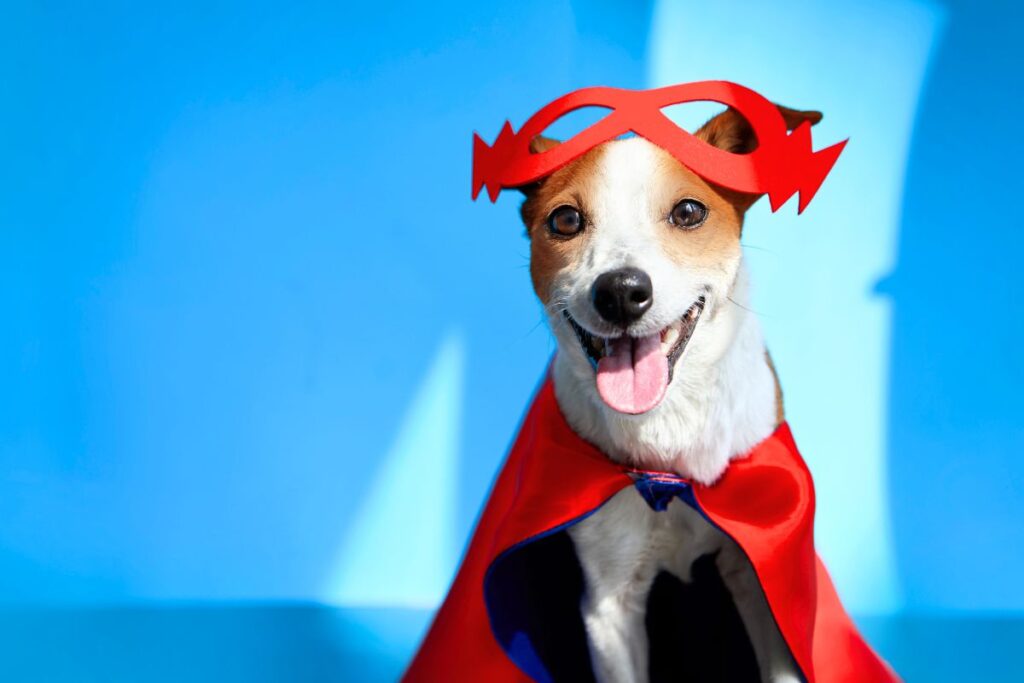
If dreams replay life, then every moment you share with your dog becomes raw material for their nighttime adventures. The wagging tails, the belly rubs, the long walks shape their days and echo in their dreams. You hold more influence over that dream world than you might imagine.
- Fill their days with play and exploration
A tired dog is a happy dreamer. Physical activity, whether fetch, a romp with other dogs, or a new trail, provides exercise and rich experiences for the mind to replay. Active, stimulating days are linked to more REM sleep. - Maintain steady routines
Dogs thrive on predictability. Regular feeding, walks, and bedtime create a sense of safety that carries into sleep. As with children, steady schedules support deeper, calmer rest and healthier dreams. - Create a sanctuary for rest
Where your dog sleeps matters. A quiet, comfortable space free of harsh noises and interruptions allows deeper sleep. A soft bed, a favorite blanket, or your familiar scent can reassure them and may reduce stressful dreams. - Enrich their minds
Mental stimulation is as important as exercise. Puzzle toys, training sessions, and scent games engage the brain and create memorable moments to process during REM sleep. - Reduce stress and fear
Negative experiences can resurface as nightmares, so minimizing stress helps. Choose kindness, patience, and positive reinforcement. A calmer day often brings sweeter dreams.
This is not about controlling what they see while asleep. It is about offering a waking life rich in love, joy, and security, knowing those experiences will carry into the unseen realm of dreams. In nurturing their days, you also nurture their nights.
Dreams as a Mirror of Connection

Dreams remind us of what matters most. For people, they circle around love, fear, purpose, and connection. Dogs mirror that truth. Their lives revolve around the bonds they share, and so do their dreams. It reflects what all living beings crave: security, love, belonging.
There is a challenge here. If your dog’s dreams are stitched from waking life, then every moment matters. The walk you almost skipped. The hurried pat instead of a real embrace. The tone of voice that carried stress instead of warmth. These are not just passing details. They may echo in memory and resurface in sleep.
Dogs become mirrors for us. They remind us that the quality of our presence matters. As our care shapes their dreams, our kindness and patience shape the emotional landscapes of those around us. What we give in waking life does not simply fade. It lingers and ripples in ways we may never fully see.
A Nighttime Echo of Love
The next time you see your dog stir in sleep, paws running through an unseen field, imagine that you might be there with them: the voice they hear, the face they chase, the comfort they lean toward. Science cannot yet give every detail of their inner world, but one truth is clear. We matter to them so much that we follow them into the hidden landscapes of slumber.
That realization is both heartwarming and humbling. Our dogs are not just pets; they are living, breathing hearts who carry us everywhere, into their play, their fears, their learning, and their dreams. It challenges us to live in a way worthy of that devotion. Give them days rich in love, patience, and joy so their nights are filled with warmth.
In the end, the twitch of a paw in the dark is more than a random reflex. It is a reminder that love leaves traces, even in sleep. With any luck, we will remain the heroes of their dream world.
Loading...

